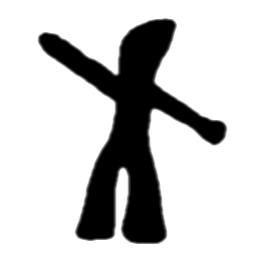Let ![]() and
and ![]() be the coordinates of the mth pixel on the boundary of
a given 2D shape, a complex number can be formed as
be the coordinates of the mth pixel on the boundary of
a given 2D shape, a complex number can be formed as
![]() , and
the Fourier Descriptor (FD) of this shape is defined as:
, and
the Fourier Descriptor (FD) of this shape is defined as:
![\begin{displaymath}Z[k]=DFT[z[m]]=\frac{1}{N}\sum_{m=0}^{N-1}z[m]e^{-j2\pi mk/N}\;\;\;(k=0,\cdots,N-1) \end{displaymath}](img4.png)
FD can be used as a representation of 2D closed shapes independent of its
location, scaling, rotation and starting point. For example, the first ![]() FD's
FD's
![]() can be used to represent the 2D shape as they
reconstruct approximately the shape without the details (corresponding to the
high frequency components susceptible to noise). However, note that since the
Fourier transform is a complex transform, the frequency spectrum has negative
frequencies as well as positive frequencies, with the DC component in the
middle. Therefore the inverse transform with
can be used to represent the 2D shape as they
reconstruct approximately the shape without the details (corresponding to the
high frequency components susceptible to noise). However, note that since the
Fourier transform is a complex transform, the frequency spectrum has negative
frequencies as well as positive frequencies, with the DC component in the
middle. Therefore the inverse transform with ![]() components needs to contain
both positive and negative terms:
components needs to contain
both positive and negative terms:
![\begin{displaymath}\hat{z}[m]=\sum_{k=-L/2}^{L/2} Z[k]e^{j2\pi mk/N}\;\;\;(m=0,\cdots,N-1) \end{displaymath}](img8.png)
The following figures show the reconstruction of a Gumby figure based on
different percentages of frequency components (descriptors) after the Fourier
transform of the pixels on the boundary of the figure in the image. The percentages
used are, from left to right, ![]() ,
, ![]() ,
, ![]() ,
, ![]() , and
, and ![]() .
It can be seen that the reconstructed figures using
.
It can be seen that the reconstructed figures using ![]() of the frequency
components are very similar to the actual figure (using one hundred percent of
the frequency components on the right).
of the frequency
components are very similar to the actual figure (using one hundred percent of
the frequency components on the right).


Fourier discriptor has the following properties:
If the 2D shape is translated by a distance ![]() :
:
![\begin{displaymath}
Z'[k] = \frac{1}{N}\sum_{m=0}^{N-1}[z[m]+z_0]e^{-j2\pi mk/N}...
...1}{N}\sum_{m=0}^{N-1}z_0e^{-j2\pi mk/N}
= Z[k]+z_0 \delta[k]
\end{displaymath}](img16.png)
If the 2D shape is scaled (with respect to origin) by a factor ![]() :
:
If the 2D shape is rotated about the origin by an angle ![]() :
:
If the starting point on the boundary is shifted from 0 to ![]() :
: